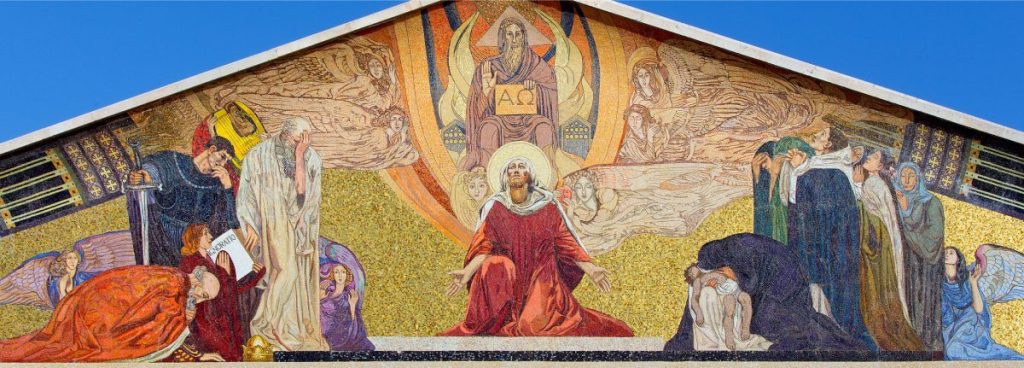This post is about what is called the Eye of Providence. Every time I am visiting Nazareth I get to visit the Church of the Annunciation. Now one of the key features of the church is the impressive mosaics that decorate it. Firstly there are the mosaics outside the church. They are on display all around the portico. And each one depicts Mary the mother of Jesus. Also on the second floor of the church, there is a beautiful mosaic which is the centerpiece of the church.
In that mosaic you can see Jesus standing and next to him is Peter dressed in yellow. The color yellow symbolizes disloyalty, insinuating to the Denial of Peter as told in the four Canonical Gospels. In the background of the mosaic, Mary, the mother of Jesus, is sitting on her throne. But there is another detail in the mosaic that is quite interesting. This is what I want to talk about in this post.
Eye of Providence: The Eye of God Watching Over Humanity
Now, what is the eye of providence? First I am sure you saw this symbol. If you ever held a one-dollar bill you saw it. Naturally, I am referring to the eye there on top of the pyramid. Well the all-seeing eye of God is a symbol having its roots in Christian iconography. Usually, it will be showing an eye often surrounded by rays of light or a glory and usually enclosed by a triangle.
Eye of Providence: What Does This Sign Represent?
So it represents the eye of God watching over humanity (the concept of divine providence). The religious use of an eye with the concept of Divine Providence did not emerge until well into the Christian era. Also, the eye of God in a triangle is still used in church architecture. A good example is here in the Church of the Annunciation. So if we are already talking about Christian Symbols what about the Alpha and the Omega? When I am giving a private tour in Jerusalem I talk about that just next to the mosaic of the Church of All Nations.


